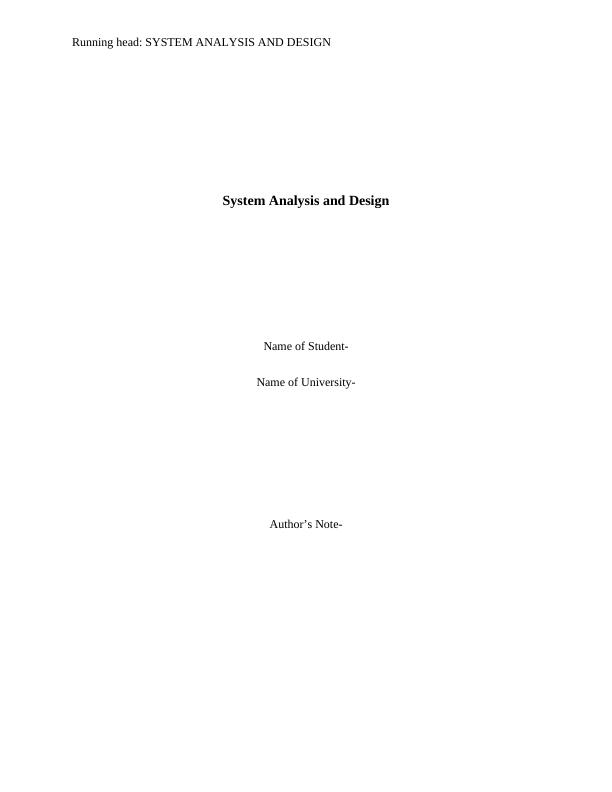System Analysis and Design
This is the subject outline for ICT 103 Systems Analysis and Design at KING’S OWN INSTITUTE. It provides general information about the subject, including the course details, subject coordinator, workload, mode of delivery, and prerequisites.
8 Pages1415 Words395 Views
Added on 2022-10-02
About This Document
This article discusses the methodologies and requirements for developing an online cab booking system for QuickCabs. It includes functional and non-functional requirements, requirement gathering techniques, and requirement modeling.
System Analysis and Design
This is the subject outline for ICT 103 Systems Analysis and Design at KING’S OWN INSTITUTE. It provides general information about the subject, including the course details, subject coordinator, workload, mode of delivery, and prerequisites.
Added on 2022-10-02
ShareRelated Documents
End of preview
Want to access all the pages? Upload your documents or become a member.
ASSIGNMENT l THE SYSTEM ANALYSIS AND DESIGN.
|8
|1615
|25
Modelling System Requirement for Quickcabs Report 2022
|10
|1585
|20
System Analysis And Designing Case Study 2022
|10
|1482
|33
Modelling System Requirements Report 2022
|11
|1800
|23
Systems Analysis And Design Methodologies
|8
|1640
|362
ICT Project Management: Methodologies, SDLC, Waterfall, PLC
|6
|1018
|140



